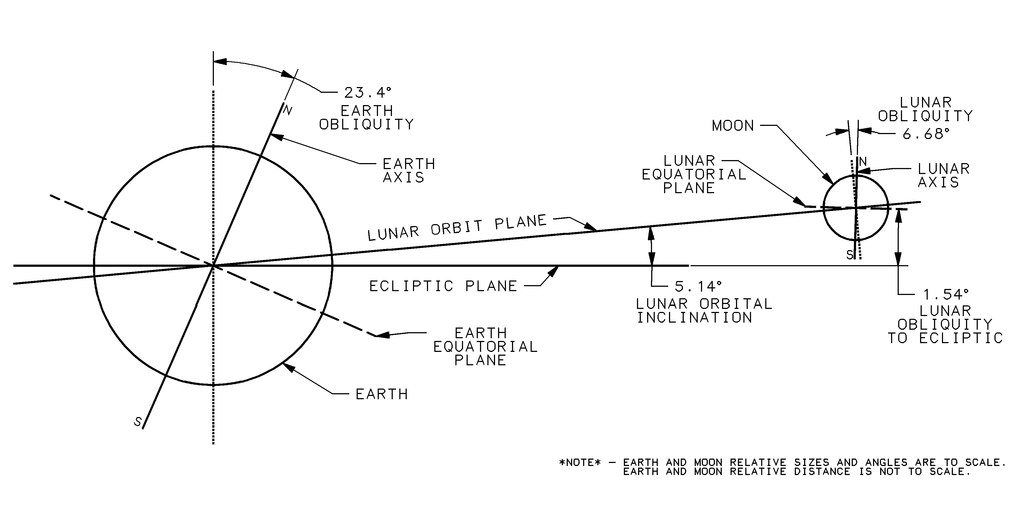
Caption: A cross-sectional side-view diagram of the Moon's orbit.
Features:
- The following keywords are useful for the interpretation of the diagram:
-
ecliptic plane,
ecliptic pole,
Earth,
Earth's
axial tilt (AKA obliquity),
Earth's axis,
Earth-Moon system,
Earth radius,
Moon,
Moon's orbit,
orbit
(elliptical orbit),
orbital inclination.
- The Earth and
Moon are approximately
to-scale
relative to each other, but the
Earth-Moon distance
is not-to-scale relative to
the Earth and
Moon.
-
The mean
Earth-Moon distance
(i.e., the mean orbital radius
of the elliptical orbit)
is actually
60.3229
Earth equatorial radii
≅ 60 Earth equatorial radii
(384,748 km)
(see Wkipedia: Orbit of the Moon).
- The Moon is shown at the highest
angle
(5.14°)
of its orbit relative to the
ecliptic plane.
- As the Moon orbits, it oscillates between 5.14° and
-5.14° from the ecliptic plane.
- During the oscillation, the Moon
is usually more than 1 Earth radius
from the ecliptic plane.
- Consquently, the Moon
and its shadow
(including
umbra,
penumbra, and
antumbra)
are usually NOT in the planar layer that is
1 Earth diameter thick that
is centered on the ecliptic plane.
- This means that
lunar eclipses and
solar eclipses
cannot usually happen when the
Moon,
Earth,
and
Sun are aligned when projected
onto the ecliptic plane.
- Eclipses can only happen
when the line of nodes (AKA node line)
is approximately aligned with the
Earth-Sun line.
The line of nodes is the line that passes through the two intersection points of the Moon's orbit and the ecliptic plane.
- The exact alignment occurs every 173.31 days
and the time frame around exact alignment
when eclipses can happen is 31 to 37 days
(see Wikipedia: Eclipse season: Details).
This time frame is called the
eclipse season.
- If counterfactually
the orbital inclination
of the Moon were zero, there
would be one
total solar eclipse/annular solar eclipse
and one total lunar eclipse
every lunar month---and then
eclipses would be just so simple.
Image link: Wikimedia Commons.
Local file: local link: moon_orbit_view_side.html.
File: moon/diagram file: moon_orbit_view_side.html.